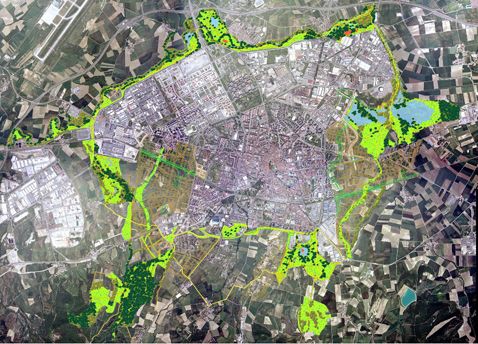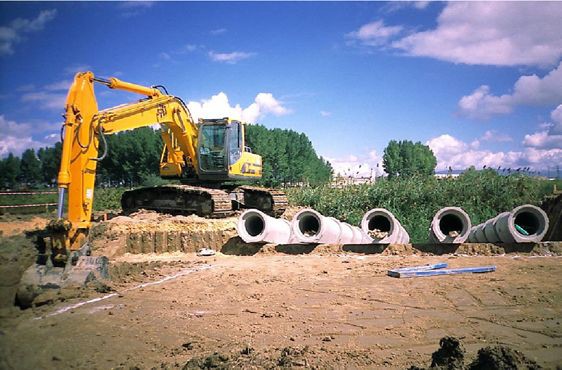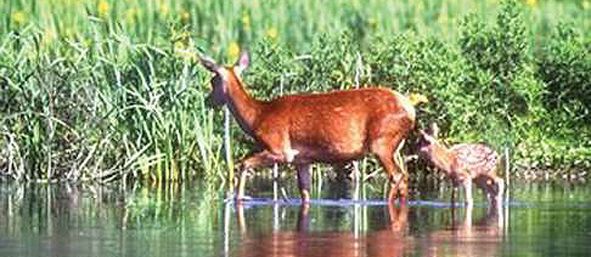Case Study
The Vitoria-Gasteiz Green Belt: actions for the conservation of biodiversity
Contact name
Luís Lobo
Institution name
Ayuntamiento de Vitoria-Gasteiz - Unidad Anillo Verde y Biodiversidad
Region & country
Basque Country / Spain
Summary
The Vitoria-Gasteiz Green belt is made up of a group of parks and areas with high ecological interest surrounding the city. These natural areas are easily accessible on foot. They serve as buffer zones and green lungs between the urban area and surrounding rural environment.
Ecological and landscape restoration of these areas and development suited for public use make nature be part of the city by balancing the availability of park areas for all neighbourhoods.
Links between urban parks and agricultural natural areas have thus been favoured, which implies a noticeable increase in biodiversity. At the same time, new outdoor leisure and environmental education activities have been developed.

Vitoria-Gasteiz Green Belt

Restauration works in the Green Belt

Salburúa wetlands - Green Belt Vitoria-Gasteiz
Background of the project
Vitoria-Gasteiz is the capital of the Basque Country in the north of Spain. It is a large municipality (covering just under 300 km2) in which the Atlantic and Mediterranean bio-geographical regions meet. The landscape is occupied by a valley bottom, with a predominance of agricultural and urban uses, and a series of heavily forested mountainous ranges: holm oak woods in its northwest edge and woods of beech, gall-oak and common oak in the hills to the south. The town, of a medium size, occupies the centre of the area.
The Vitoria-Gasteiz Green Belt is a network of periurban parks surrounding the town. The network encompasses habitats such as agricultural mosaics, riverine woodland, isolated woods and extensive forest masses. Within this set of green spaces the wetlands of Salburua, located in the east of the green belt, represent the richest site in terms of biodiversity and because of this, the exhibition is focused on this site in particular.
Decades of degradation led to the practical disappearance of the lagoons and original plant formations of the area, notably in the latter case with the cutting down of the once extensive oak woods.
Therefore, the Vitoria-Gasteiz Municipal Council endeavoured to restaure wetlands around the city and create the Green Belt.
Solution and actions taken
- SCIENTIFIC STUDIES: Since the beginning of its restoration, the site’s management has been supported by scientific studies and the monitoring of different environmental parameters (water, aquatic vegetation, fauna groups, etc.) in order to test the changes in the site over time and the efficiency of the measures adopted.
- SITE MANAGEMENT: With respect to the site’s management, the general criteria used are based on making full use of natural processes, with minimum human intervention and seeking to maximise biodiversity.
- LAGOONS: In the case of the lagoons, the natural flood cycles are respected, and so the wetland can almost completely dry out in dry summers.
- WOODLAND: the site seeks to restore the original forests of the area, and so 30% of the surface area of the park has been replanted with autochthonous species, mainly in hedgerows, riverine vegetation and very particularly with the understorey of the oakwoods. With respect to the scant amount of mature forest masses currently existing, the general criterion applied is based on the abandonment of uses, thus allowing them to develop into mature forests. The progressive replacement of the poplar plantations is underway for species native to the area.
- GRASSLAND: The grassland areas are managed to create varied ecological environments by means of different levels of cutting, from a single annual ground clearance in the autumn to areas with more intensive public use with 4-6 cuttings a year. Slow-growing autochthonous species, which do not require irrigation, are sown. Part of the marsh vegetation is managed using a herd of red deer, supported by more intensive work (clearance work, etc.) in specific areas.
- RED DEERS: The introduction of red deers has allowed the fencing of an extensive surface area (65 ha) where the public and their dogs are forbidden access. The creation of this reserve with no public access has undoubtedly benefited the colonization of the site by species of wildlife which shy away from human presence. At the same time, the deer fulfil a significant role in attracting visitors.
- AUTOCHTONOUS WILDLIFE: The actions done in favour of the autochthonous wildlife of Salburua are very varied and seek to promote the presence of the widest possible range of groups or species: from the installation of bat boxes or the piling up of dead wood in order to favour wood-eating insects to the installation of artificial nests or floating islands with different nesting substrates. The population of European mink (Mustela lutreola), the most threatened species present in the site, could be reinforced in the future with individuals bred in captivity.
Other institutions or parties involved
Results
- Salburua is considered one of the most important wetlands at a regional level and has been declared a Ramsar Site and SAC (EC Special Area of Conservation). It is noted for its diverse vegetable formations such as common oak woods and formations of Carex riparia and the presence of a number of species of wildlife, among which the most threatened is the European mink (Mustela lutreola).
- Vitoria-Gasteiz has been awarded as European Green Capital in 2012 largely due to the creation of this Green Belt that brings nature into the city
Challenges
- POLLUTION. Different diagnoses and actions have been carried out to put a stop to both occasional and diffuse contamination sources, lthough the absence of municipal powers in agriculture can make it difficult to tackle this.
- EXOTIC INVASIVE SPECIES. One of the critical factors of the management of the site is the control of exotic invasive species. Action is being taken against American mink (Mustela vison), exotic fish and red- necked slider terrapins (Trachemys scripta). One of the challenges of the future is to reduce the densities of red crab (Procambarus clarki). Apart from physical removals during particularly dry summers, other measures are considered such as the creation of small seasonal lagoons free of non-native fish and red crab.
- VISITORS. The public is directed by means of the existing paths through the less sensitive areas of the wetland, with the aim of preventing visitors from passing through the “heart of the site”. It should be taken into account that in 2005 the number of visits to the park was estimated at more than 300,000
- ECOLOGICAL CONNECTIVITY. With respect to ecological connectivity, the problems are concentrated in areas where rivers and streams cross under roads, leading to frequent deaths of wildlife and because of urban expansion which is to be developed in the southwest area of the park, and which means the sinking of two streams along their urban stretch which are important as corridors. A study- diagnosis was carried out in 2005 on the situation leading to a series of actions to be carried out in the future
Lessons learned
- The experience of these years has shown that it may be necessary to manage the densities of herbivores more frequently and even to fence off areas from grazing in order to favour the development of undergrowth, a habitat with interesting flora and wildlife species such as agile frog (Rana dalmatina). The combination of deer with more manageable livestock has not been ruled out for the future.
Contact name
Luís Lobo
Institution name
Ayuntamiento de Vitoria-Gasteiz - Unidad Anillo Verde y Biodiversidad
Website(s)
